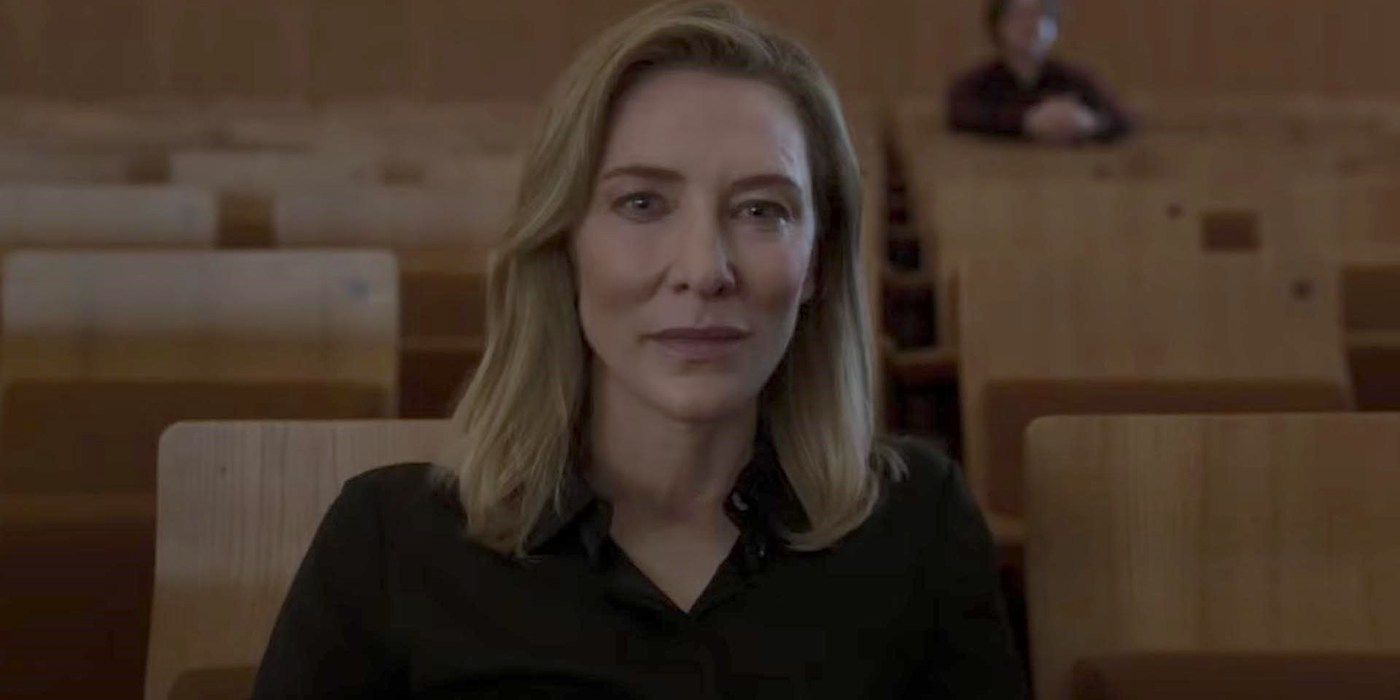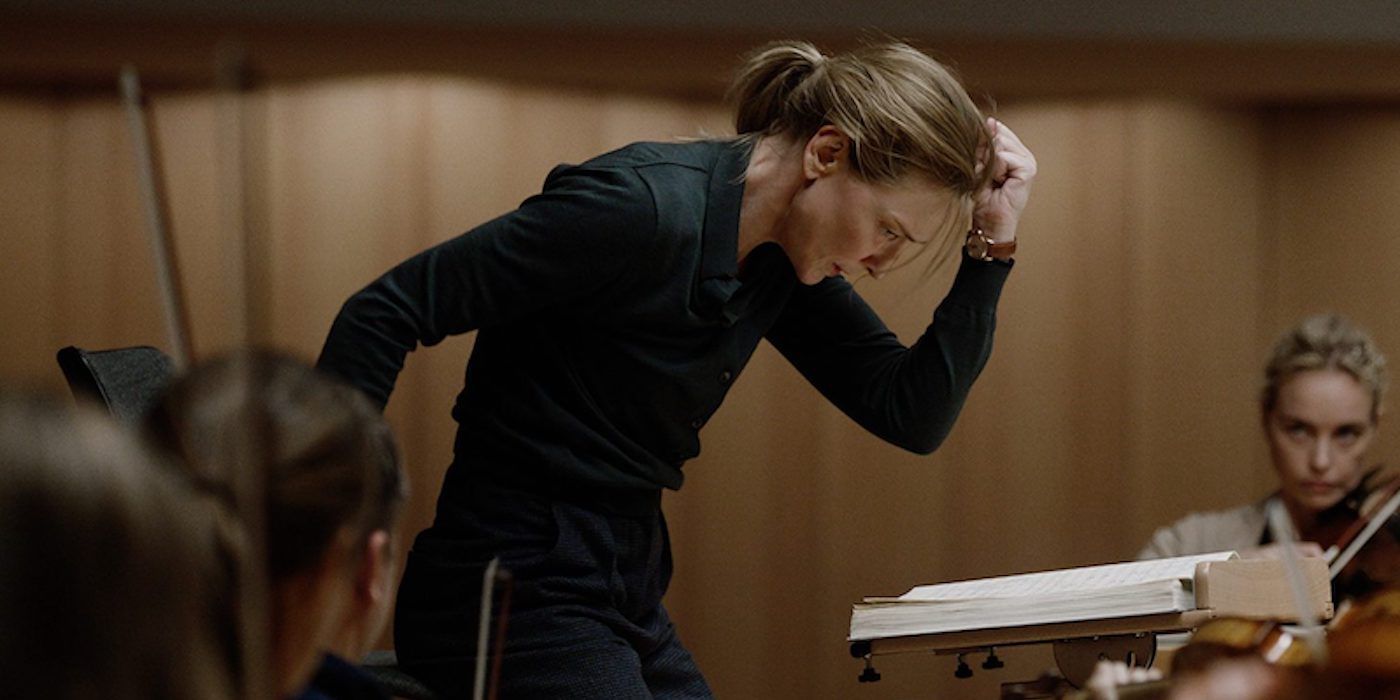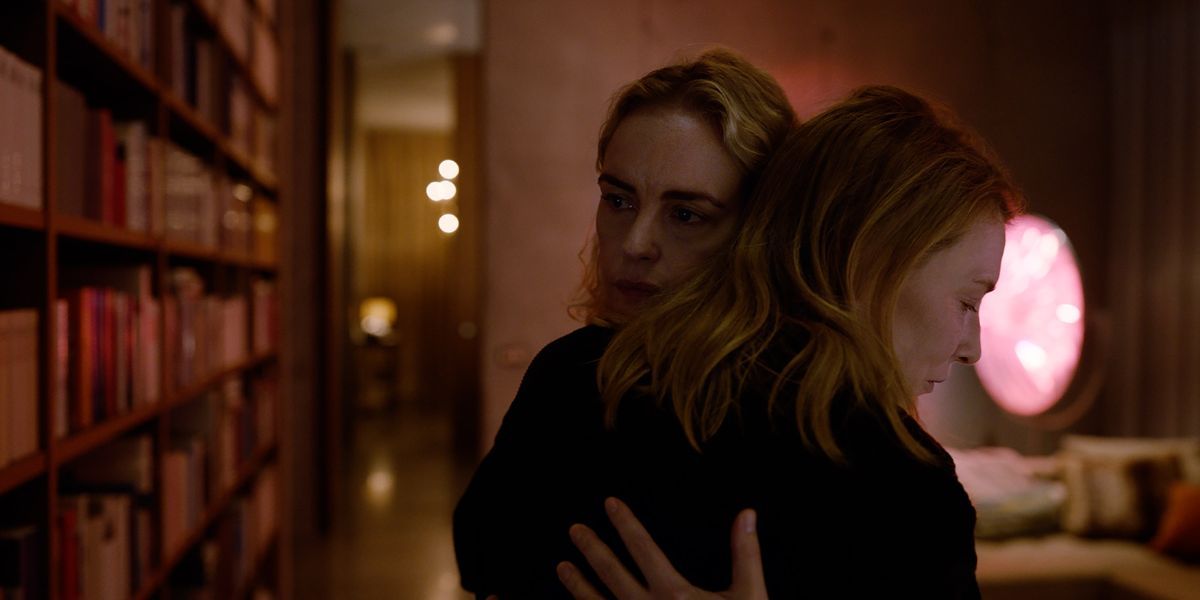Editor's Note: The following review was originally part of our Venice coverage.To give a hint at what's special about TÁR you needn't look further than the opening credits. The opening credits start backwards with members of the crew that generally are at the very end of the end credits, like catering and production units and assistant editors. This is a movie about how an ego can grow too big and turn to manipulation when one role gets too much credit in a collaborative field. An orchestra is like a film set, and most collaborators get shoved to the back of a program or the end of the film credits. While this adds to the movie's runtime up front, it's a fitting gesture for the movie you're about to watch.
Discussions of what’s the perfect run time for a movie are perhaps the most boring of all film talk. Whether it’s 72 minutes or 210 minutes, the true test of a runtime is what purpose it had in the length; whether it’s lean or long, what did the filmmaker set to do within those confines? And did it work? That’s all that matters. 158 minutes will be a big talking point around TÁR. It’s a movie star character piece with very little plot, something rare these days, but even when these types of movies were more common, they didn’t run that long.
TÁR follows a revered classical composer/conductor, Lydia Tár (Cate Blanchett), in the weeks leading up to a career moment of completing the fifth of the five Mahler adaptations. She is the first woman to be the lead conductor of a major German orchestra. She is a member of the EGOT club. She is a mother. Her partner (Nina Hoss) has a chair in her orchestra. Do we need to listen to almost the entirety of a sit-down interview with The New Yorker? What about her caretaker neighbor next door who’s always looking for her mother’s newspaper? What about multiple running scenes? Yes. This is a movie about how someone extremely respected composes herself. She always has an audience, whether it's journalists, an adoring old guard of conductors, a roomful of young students, and even a young girl who’s picking on her daughter at school.
Writer/director Todd Field drops small hints throughout that there are some secrets that her assistant (Noémie Merlant) knows, but the exact information is withheld from us because Lydia won’t engage with discussing certain people. This isn’t done as a trick against the audience but rather with an organic touch of how two people who have known each other for a long time would speak to each other, particularly when it’s desired to dismiss a potential discussion from starting. Parallel to this, we watch her navigate how to use her power to usher some old white men into retirement, dangle possible promotions to young women, and stroke the egos of the old white men of whom she needs the support. Tár rose to prominence in a field dominated for centuries by white men, but—despite starting a successful program to place women conductors—she defends the greatness of many men that the younger generation has taken issue with. She will answer questions about gender, but doesn’t define her place in history within that narrative.
What Field and Blanchett are building toward is a character portrait that shows us a complicated woman who orchestrates her own fall from grace. It engages with multiple topical talking points without ever using the buzzwords and dog whistle terms that would hand over the narrative to the audience with their preconceived notions already firm. So I won’t use the terms in this review either because Field and Blanchett thrillingly reveal their intent like peeling an onion. The runtime is warranted because anything shorter would lose the nuance of power dynamics—including when people decide to turn.
Whether someone is corrupted, flawed, or uses the wrong language, it’s rare that someone is evil through and through. A fall from grace story is a tale as old as time. But in an era where many audiences are looking for signals from the filmmaker to whether a certain behavior is condoned, Field instead has chosen to present a character fully, not to make a statement, but solely to make a portrait in unexpected ways. When Lydia hears a woman screaming in the park, she tries her best to locate her via the direction of her voice, but she cannot. When a character’s flat is empty, that empty space is there to speak for the threat they knew would come. This is Field’s first film in 16 years and so people are primed to look for clues that will tell why this was the movie he came back with. But for me, the remarkable details in how information is revealed entirely through a central performance is the reason TÁR excites. Not what it has to say, but how it tells us the story through a dual execution of performance and writing preparation.
Of course, TÁR sinks or swims depending on the performances and Blanchett commands every one of these 158 minutes. She is already a generational performer but TÁR has to be one of her all-time best performances. In more ways than one, this is her Raging Bull. It’s a metronome of a performance, swinging back and forth from public persona to private persona with only small changes between the two. But any shift is revealing, deeply human, and truthful; all of this to vacillate between Lydia’s positive and negative attributes. This is a master class of acting. And while Blanchett astounds, I’d be remiss to not also highlight Hoss, who gets to be the stand-in for the audience, in piecing together Lydia’s actions, but she does so with astounding grace and disbelief. Every woman in TÁR gets to swing on a character metronome, not just Blanchett. Each has a little pocket of allowance for Lydia’s space to dominate others. This is another layer of the run time that is used optimally.
“Time is the thing. Time is the essential piece of interpretation. You cannot start without me; I start the clock.” That’s how Lydia Tár describes her profession. It’s also the best way to approach the movie. You give yourself over to the amount of time a filmmaker and performer use to present their story. Time is also an era, however, and this era requires more time to thoughtfully explore muddy waters. More time still, if the time is not being used to make a topical statement. And all the time you need if you have a performer like Blanchett playing the notes.
Rating: A-
TÁR is out in theaters on October 7th.



